Definition
Malaria is one of the major public health problems of the country. Around 1.5 million confirmed cases are reported annually by the National Vector Borne Disease Control Programme (NVBDCP), of which 40–50% is due to Plasmodium falciparum. It is curable if effective treatment is started early. Delay in treatment may lead to serious consequences including death. Prompt and effective treatment is also important for controlling the transmission of malaria.
Epidemiology
- 2 billion people live in areas at risk of malaria transmission in 106 countries and territories.
- The World Health Organization estimates that in 2016 malaria caused 216 million clinical episodes and 445,000 deaths.
Types of malaria
Parasites of the genus Plasmodium cause malaria. Although there are many species of Plasmodium, only five infect humans and cause malaria.
P. falciparum: Found in tropical and subtropical areas; major contributor to deaths from severe malaria
P. vivax: Found in Asia and Latin America; has a dormant stage that can cause relapses
P. ovale: Found in Africa and the Pacific islands
P. malariae: Worldwide; can cause a chronic infection
P. knowlesi: Found throughout Southeast Asia; can rapidly progress from an uncomplicated case to a severe malaria infection
Parasite life cycle
The life cycle of the falciparum malaria parasite is complex. When an infectious mosquito feeds on a human being, parasites (called sporozoites) are injected into the bloodstream. From here they travel directly to the liver where they mature for about 6 days. At this stage, there are no symptoms of disease in the person who has been infected.
The life cycle of the malarial parasite
Infections begin when the following stages occur:
- Sporozoites, the infective stages, are injected by a mosquito and are carried around the body until they invade liver hepatocytes.
- Then it undergoes a phase of asexual multiplication (exoerythrocytic schizogony) resulting in the production of many uninucleate merozoites. These merozoites flood out into the blood and invade red blood cells.
- They initiate the second phase of asexual multiplication (erythrocytic schizogony) resulting in the production of about 8-16 merozoites which invade new red blood cells.
- The infection progresses, some young merozoites develop into male and female gametocytes that circulate in the peripheral blood until they are taken up by a female anopheline mosquito when it feeds.
- Within the mosquito the gametocytes mature into male and female gametes, fertilization occurs and a motile zygote (ookinete) is formed within the lumen of the mosquito gut, the beginning of a process known as sporogony. The ookinete penetrates the gut wall and becomes conspicuous oocyst within which another phase of multiplication occurs resulting in the formation of sporozoites that migrate to the salivary glands of a mosquito and are injected when the mosquito feeds on a new host.
Risk factors of malaria
- Rain and increased water bodies are appropriate for mosquito breeding and disease transmission.
- Young children and infants.
- Pregnant women.
- People with weak immunity are more susceptible to the risk of malaria.
- People traveling to malaria-infected areas.
- Poverty and lack of health awareness and education contribute to spreading the disease and increasing mortality rate around the world.
Causes
Malaria can occur if a mosquito infected with the Plasmodium parasite bites you. There are four kinds of malaria parasites that can infect humans: Plasmodium vivax, P. ovale, P. malariae, and P. falciparum. P. falciparum causes a more severe form of the disease and those who contract this form of malaria have a higher risk of death. An infected mother can also pass the disease to her baby at birth. This is known as congenital malaria. It is transmitted by blood, so it can also be transmitted through:
- An organ transplant
- A transfusion
- Use of shared needles or syringes
Symptoms
A malaria infection is generally characterized by recurrent attacks with the following signs and symptoms:
- Headache
- Fever
- Shivering
- Joint pain
- Vomiting
- Hemolytic anemia
- Jaundice
- Hemoglobin in the urine
- Retinal damage
- Convulsions
- Coma
- Bloody stools
- Abdominal pain
- Shaking chills that can range from moderate to severe
- High fever
- Profuse sweating
Complications of malaria
- Malaria is a serious illness that can be fatal if not diagnosed and treated quickly. Pregnant women, babies, young children and the elderly are, particularly at risk.
- The Plasmodium falciparum parasite causes the most severe malaria symptoms and most deaths.
- As complications of severe malaria can occur within hours or days of the first symptoms, it’s important to seek urgent medical help as soon as possible.
Other complications that can arise as a result of severe malaria include:
- liver failure and jaundice – yellowing of the skin and whites of the eyes
- shock – a sudden drop in blood pressure
- pulmonary edema – a build-up of fluid in the lungs
- acute respiratory distress syndrome (ARDS)
- abnormally low blood sugar – hypoglycemia
- kidney failure
- swelling and rupturing of the spleen
- dehydration
Diagnosis and test for malaria
Blood tests can show the presence of the parasite and help tailor treatment by determining:
- Whether you have malaria
- Which type of malaria parasite is causing your symptoms
- If your infection is caused by a parasite resistant to certain drugs
- Whether the disease is affecting any of your vital organs
Some blood tests can take several days to complete, while others can produce results in less than 15 minutes.
Blood test
Treatment and medications
Besides supportive care, the medical team needs to decide on the appropriate antibiotics to treat malaria. The choice will depend on several factors, including
- The specific species of parasite identified,
- The severity of symptoms, and
- Determination of drug resistance based on the geographic area where the patient traveled.
Physicians will administer the medication in pill form or as an intravenous antibiotic depending on above factors.
The most commonly used medications are
- Chloroquine (Aralen),
- Doxycycline (Vibramycin, Oracea, Adoxa, Atridox),
- Quinine (Qualaquin),
- Mefloquine (Lariam),
- Atovaquone/proguanil (Malarone),
- Artemether/lumefantrine (Coartem), and
- Primaquine phosphate (Primaquine).
Here are some home remedies for malaria
1. Grapefruit
Grapefruit contains a substance called quinine which is said to neutralize malaria inducing parasites. It aides in destroying the parasites and strengthens the immune system. A malaria patient should consume grapefruit and grapefruit juice to combat the disease.
2. Cinnamon
Cinnamon has great medicinal values and it contains cinnamaldehyde which provides aid against inflammation. This spice is full of anti-parasitic qualities. Its consumption provides immediate relief to body ache that is usually attached to malaria. It can be boiled with water and the concoction can be taken with honey. It also reverses the loss of appetite, cramps, nausea etc. Consuming this concoction can be a very useful home remedy to fight malaria.
3. Holy basil
Often the major symptoms of malaria include body and joint pains. Holy basil is a popular herb which eases inflammation and joint pains. It can be an amazing home remedy to treat the symptoms of malaria. It is also included in many ayurvedic medicines and is said to cure many diseases including malaria. Basil can be infused with tea or can be boiled with water and consumed with honey by the person suffering from malaria.
4. Fever nuts
These are nuts which contain seeds with immense medicinal properties. It breaks the malaria fever and boosts the immune system. This herb effectively treats the symptom of malaria and helps in curing the person suffering from malaria fever by reducing the soaring body temperatures. Fever nuts are one of the best home remedies that can be used against malaria symptoms. This is one of the best home remedy one can do to prevent malaria.
5. Ginger
Possible qualities of ginger help in relieving nausea, fever, body ache and in improving the appetite. Ginger is one food item which is available in every Indian household and can be used as a home remedy to fight malaria and is symptoms. It can be boiled with water and can be consumed to speed up the recovery process. It has natural antibiotic properties which can be enhanced if it is taken with raisins. This is one of the best home remedy one can do to prevent malaria.
Prevention
- Use mosquito repellents regularly – apply it to your skin, especially to all exposed areas, and clothing. For your skin, opt for a repellent that contains at least a 10 percent concentration of DEET.
- Use camphor as a repellent- you can light camphor in the room with all the doors and windows closed. Leave it for about 15-20 minutes to keep the mosquitoes away. You can also use the lemon and clove technique- just stick some cloves in a half-sliced lemon and keep it near your bed while you sleep.
- Use a mosquito bed net while sleeping.
- Wear long-sleeved shirts, pants, and socks.
- Wear covered shoes when outside.
- Avoid exercising outdoors as mosquitoes get attracted to sweat.
- Empty and clean all containers that hold water such as flower pots, flower vases, and animal dishes – at least once a week – to prevent mosquitoes from breeding at your house.
- Keep your surroundings clean, ensuring that there is no stagnant water, which is a breeding ground for the mosquitoes?
- Try to stay in air-conditioned or well-screened housing.
 Diseases Treatments Dictionary This is complete solution to read all diseases treatments Which covers Prevention, Causes, Symptoms, Medical Terms, Drugs, Prescription, Natural Remedies with cures and Treatments. Most of the common diseases were listed in names, split with categories.
Diseases Treatments Dictionary This is complete solution to read all diseases treatments Which covers Prevention, Causes, Symptoms, Medical Terms, Drugs, Prescription, Natural Remedies with cures and Treatments. Most of the common diseases were listed in names, split with categories.
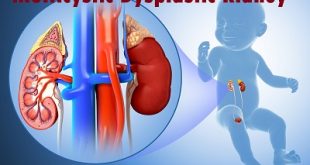

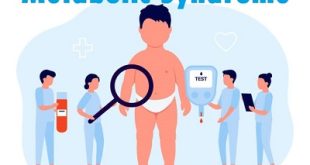
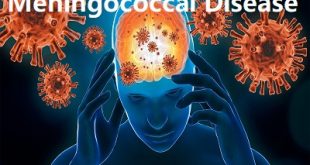

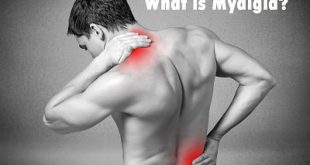
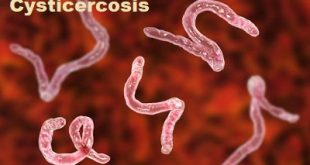

how doxacilline is a treatment of malaria
This medication is also used to prevent malaria. This medication is known as a tetracycline antibiotic. It works by stopping the growth of bacteria.
I sincerely appreciate your hand work. At least, one can help his or herself.
Thanks so much
Please tell me aboute the doseses of drug which treat malaria…
1.500 mg chloroquine phosphate (300 mg base) orally on the same day each week
2. 60 kg or more: 1 g chloroquine phosphate (600 mg base) orally as an initial dose, followed by 500 mg chloroquine phosphate (300 mg base) orally after 6 to 8 hours, then 500 mg chloroquine phosphate (300 mg base) orally once a day on the next 2 consecutive days
Total dose: 2.5 g chloroquine phosphate (1.5 g base) in 3 days
I congratulated u for ur hand out n support
Wonderful one, thank you so much for your help
quinine has been proved to having side effects especially on our senses of hearing, seeing and others. therefore is it still regarded for malaria treatment
a very low dose of quinine is prescribed.
is duo cotexcin effective for malaria treatment?
yes, Duo-Cotecxin is an effective drug to treat malaria.
How can jaundice be cured for a baby of 5days.the eye is yellow.
which drug is good to cure it or any thing that can be given to the baby to cure that please. I need urgent reply . thanks
Please consult a doctor as soon as possible.
at which intervals is fansida given as a prophylaxis. doxycycline also
what about cotrimoxazol as a prophylaxis .need urgent answer coz I’m presenting on malaria.
please consult a doctor.
thank for educating us. I have good through the causes and how to prevent it but I have treated malaria time without number . how can I get rid of it , am tried
You should be much aware of mosquito bites. Take medicines until it cures.
welldone ,more on severe malaria
l will like you to do more research on current medications. You have done a wonderful job. Thanks for the exposition
running out of words this is actually fabulous
incase of sever anaemic condition what we do?? or suppose a person suffering from jaundice
Hemolytic jaundice is treated with iron supplements. Hemolytic diseases are treated, if at all, with medications and blood transfusions, except in the case of an enlarged spleen. Surgical removal of the spleen (splenectomy) can sometimes cure hemolytic anemia.
what Ciprofloxacin
Ciprofloxacin is an antibiotic used to treat a number of bacterial infections. This includes bone and joint infections, intra abdominal infections, certain type of infectious diarrhea, respiratory tract infections, skin infections, typhoid fever, and urinary tract infections, among others.
Does malaria causes short of pennis
No. Although malaria is characterized by high fever, it won’t cause shrinking of pennies.
Does malaria causes bad odour in mouth
Bad breath is reported only by a few people with Malaria. Depending on their food and bad bowel hygiene it may cause bad breath during malaria.
Thanks,helpful information…
my immune system is so weak that I can get infected by malaria even three times in a month…
just a single mosquito bite gets me infected,I also develop severe soul throats during the infected period.doctors here have given up on me and there’s nothing they can do…..
is there any ant malaria I can use just help me stay a longer period without being infected?have tried all types of repellents and nothing seem work…
Please consult an immunology specialist.
thank for the out saving.
Thanks for these important information. it really refresh my mind on malaria
i like your message about how to confirm if someone around us got malaria.
Is chloroquine still effective and can it be taken along with any of the other malaria drugs. Thanks
Yes, it can be taken along with the other malarial drugs and is still effective along with them.
What best antimalaria should be used in treating children?
Chloroquine phosphate (Aralen)
Quinine (Qualaquin)
Quinidine gluconate
Doxycycline (Vibramycin, Adoxa, Doryx)
can 1 malaria affected person in the family spread malaria to family?
Yes, abruptly one can spread malaria with their family members.
Very interesting and educative.I sign five stars for you.
please, my daughter of almond 2yrs,was given d following amodiaquine suspension, artesunate for children and paracetamol syrup. Her temperature still burns at night and this is the second day of treatment. I am confused on wat next to do. should I opt for injections or give it time, if the medications prescribed by the doctor is OK?
Please consult a doctor as soon as posible.
I have treated maleria several times and I am tired of treating it.is there any cure for maleria?
Yes, there are treatments which will cure malaria. Please read it in the post.
for those in poor area they must seek for health care
They should first keep their living surroundings very clean and clear from the mosquitos colony.
woe its such a wonfergul way of learning.thánks a lot for the apps service.
this app is very good
how does doxycycline treat malaria? n what about artesunate which is now the first line treatment of malaria
there is no first or second line. ACT i.e artesunate or related compounds in combination treatment with doxycycline, clindamycin, mefloquine or sul plus pyre is standard.
plasmodium vivax is more common in india …
somehow for avoiding side effects of malaria … hygiene is most important .. prevention is better than cure
Well appreciated. However, kindly expantiate on the Lemon-Clove Technigue in the Malaria Prevention. thanks
this app very good
this app very good
good god bless you
Good
Does Malaria make once legs and hands to be cold. Tests show sugar level on the border line to a person 72yrs age
No, it does not make such conditions.
Does severe form of malaria causes itching of the body?
NO it won’t cause.
what is side effect of ALU tabs
Constipation, Feel Like Throwing Up, Stomach Cramps, Taste Problems, Throwing Up.
can I repeat another medicine after I have taken drugs and I still experiencing the symptoms. can I take chloroquine tablet for next treatment. thanks for the good work.
please consult a doctor.
Doxycycline is an antibiotic. how treat malaria
Please see in the post for the details about malaria treatment.
What other alternatives for treatment ov malaria concerns on natural treatments.
Please read in the post. The natural remedies are updated.
Sir.What is the major Symptom of Malaria(P.falciparum)???
The major symptoms of malaria include:
shaking chills that can range from moderate to severe, high fever, profuse sweating, headache, nausea, vomiting, abdominal pain, diarrhea, anemia, muscle, pain, convulsions, coma, and bloody stools.
is possible to use this as study material
yes of course.
My malaria symptoms are not going ooh, please what should I do now?
Please consult a doctor asap.
please help me with sending the which medicine should be used to cure for the malaria fever. please send me
please read in the post.
infact I’m really enjoying the disease dictionary
Thank you for using our app. keep supporting us.
I like the lemon method. will try
Dear doctor if possible May you add the prescription and the doses for the different ages
Very soon we will upload the prescription and dosages for the diseases.
Am asking how Doxycerine can treat Malaria?
This stops the replication of bacteria and produces a bacteriostatic effect.
can a baby get malaria through breastfeeding from an infected mother?
No, malaria will not infect the baby.
how many doses of proscribed malaria drugs should I use to bring effects before I re complained.
atovaquone/proguanil: tablet – 250mg/100mg
Prophylaxis: 250 mg/100 mg (1 tablet) PO daily, beginning 1-2 days before travel to malaria-endemic area and continued until 7 days after return
Treatment: 1 g/400 mg (4 tablets) PO daily for 3 days
well articulated,wat abt therapy 4 ulcer
http://diseasesdic.com/stomach-ulcer-symptoms-causes-treatment-and-prevention/
how do I use quinine for treatment
It is administered parenterally to patients with severe or complicated malaria who cannot take drugs by mouth because of coma, convulsions or vomiting.
It is administered orally to less seriously ill patients with infections likely to be resistant to chloroquine or mefloquine, sometimes in combination with pyrimethamine/sulfadoxine or a tetracycline.
Good teaching thank u very much ,how can u prevent a child from convolsion.
Thank you for using our app. First aid for convulsions are as follows:
-Place your child on the floor on his or her side and clear away objects that are in close proximity.
-Loosen tight clothing surrounding the head or neck.
-Don’t put anything in your child’s mouth or try to stop the convulsion unless your pediatrician has told you what to do.
-If your child vomits, move him onto his side and clear out his mouth.
-Don’t try to hold your child down or restrain his movements.
Thanks So much,really Appreciate may God continue to bless,for the malaria remedy.
how can lemon be used to prevent malaria?
Lime juice when used with the appropriate antimalarial may enhance malaria parasite clearance especially in those with uncomplicated malaria.
Please how with the ginger be consumed? Is it the the water or the ginger itself…. Again, do we have to add another thing? I have treated malaria several times but it keeps coming
Please consult a doctor to escape from recurrent malaria.
Ginger can be consumed in the following ways:
-Add fresh ginger to a smoothie or juice
-Add fresh or dried ginger to a stir-fry or homemade salad dressing
-Make ginger tea by steep peeled fresh ginger in boiling water
-Use fresh or dried ginger to spice up any fish recipe
Tab. Gen-M (lumafentrin /آرتی ether) 80/480 mg (Bd for three days)
Incase of relpasing malaria use primaquine after testing for G6PD levels in males.
I need malaria medicine with the prescription, I’m 30 years old
common antimalarial drugs include: Combination of atovaquone and proguanil (Malarone) Quinine sulfate (Qualaquin) with doxycycline (Vibramycin, Monodox, others) Mefloquine.
can I use chloroquine with pretine to treat malaria sir.
No only chloroquine can be used for malaria treatment. One should consult a doctor before they consume a drug.
guud research but I am of d opinion dat their should be a vaccine for malaria. Is there an ongoing research on such
need middcine and doses of each type of malaria
The most common antimalarial drugs include:
Chloroquine phosphate
Artemisinin-based combination therapies (ACTs)
Atovaquone-proguanil (Malarone)
Quinine sulfate (Qualaquin) with doxycycline (Oracea, Vibramycin, others)
Primaquine phosphate.
what’s the composition of malaria
why is artesunate not included in the list of drugs for malaria?
Artesunate is indeed included in the list of drugs for malaria, specifically recommended for severe malaria treatment. It is a key component of artemisinin-based combination therapies (ACTs), which are widely recommended by health organizations for the management of uncomplicated Plasmodium falciparum malaria.